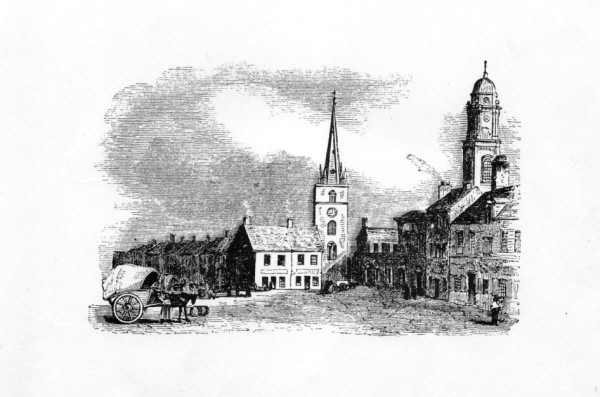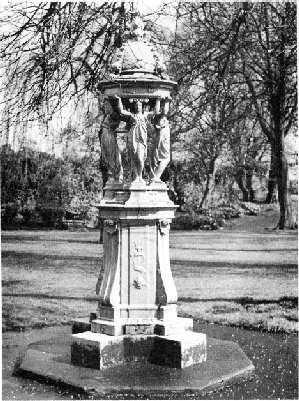
- History Page
- Architectural Heritage Society page1
- Architectural Heritage Society page2
- Architectural Heritage Society page3
- Architectural Heritage Society Photos
ULSTER ARCHITECTURAL HERITAGE SOCIETY Page 1
LIST OF
HISTORIC BUILDINGS
GROUPS OF BUILDINGS
BUILDINGS OF ARCHITECTURAL IMPORTANCE
IN THE BOROUGH OF LISBURN

prepared November 1968 - May 1969 for the
ULSTER ARCHITECTURAL HERITAGE SOCIETY
by
C . E. B. Brett, Lady Dunleath.
REFERENCES.
| Bayly, H. | Topographical and Historical Account of Lisburn 1834 |
| B. N. L. | Belfast News Letter |
| Camblin | The Town in Ulster, 1951 |
| Carmody, W. P | Lisburn Cathedral, 1926 |
| Carson, J. | Scrapbook relating to Lisburn, in Linenhall Library, Belfast |
| Chart | Preliminary Survey of Ancient Monuments, 1940 |
| Craig, W. I. | Presbyterianism in Lisburn, 1964 |
| Green | Concise History of Lisburn & Neighbourhood, 1906 |
| Green, E. R. R. | Industrial Archaeology of Co. Down, 1963 |
| I. B. | Irish Builder (Files in National Library of Ireland, Topographical Dictionary of Ireland, Dublin) |
| Lewis | Topographical Dictionary of Ireland, 1837 |
| Shell | Shell Guide to Ireland, 2nd Edition, 1967 |
| Star | Ulster Star, Borough Supplement, 27 June 1964. |
| T. L. S. | Times Literary Supplement |
The compilers of this List gratefully acknowledge much information and
assistance generously made available to them by Mr. Frederick Kee, Mr.
Donald Cheyne, and other members of the Lisburn Historical Society; and
are grateful also to Mr. H. A. Duff of Lisburn for all the photographs
used to illustrate this list, save that of Lisburn Courthouse as it used
to be, reproduced from 'The Town in Ulster' by kind permission
of Mr. Gilbert Camblin. The print of Lisburn in 1853 is taken from 'The
North and Giant's Causeway' by Mr. and Mrs. S. C. Hall.
 |
It is not suggested that all the buildings listed must be retained as
and when Lisburn is redeveloped. Individual buildings, groups and areas
marked A are considered essential; those marked B are important and should
be retained wherever feasible. The rest are of sufficient quality to merit
integration in a new scheme. Every building listed deserves photographic
recording should its preservation prove impracticable.
![]()
PRELIMINARY NOTE.
Lisburn (formerly Lisnagarvey) has grown, and is still fast growing, from
a 17th century settlement town, built around the castle commanding the
bridge over the river Lagan.
In 1707 a great fire, accidentally started, destroyed almost every building - including the castle and the cathedral. The town was promptly rebuilt; 100 years ago it was a splendid example of a lively and harmonious early Georgian market town, constituting at the same time the centre of the linen industry of the Lagan valley. Though the importance of linen to Lisburn has declined, it is now a highly prosperous centre close to Belfast, yet serving a wide hinterland.
Lisburn has every advantage of site and of tradition; it is splendidly placed astride the steep ridge that follows the curve of one of the most attractive stretches of the river Lagan; its buildings include a noble cathedral, handsome Georgian town houses, and a sprinkling of churches and public buildings of distinction. It also embraces open spaces with many mature trees. Yet in 1969 it is fast sliding downhill towards a state of ugly and untidy mediocrity.
This, in a period when the perimeter of the town is expanding rapidly and new housing estates (some of them excellent) are arising on every side, is due principally to two factors. The first is traffic: Lisburn is rapidly being ensnarled by the weight of traffic passing through its centre and over its two bridges. There is a vast lunar desert of demolitions and dereliction between the town centre and the river, used for parking pending redevelopment; there is a large car park in the centre at Smithfield; yet both are overflowing, and there is a never ceasing flood of through traffic notwithstanding the proximity of the M 1. Advice from planning and traffic consultants is urgently needed.
Second, the concentration on development in the outskirts has clearly been at the expense of the town centre, and especially the riverside,. From east to west the line of the river is choked with rubbish: scrap-iron, old tyres, old motor-cars, rubble, litter of every kind. Mill-races are blocked and half filled with rubbish. Wherever there ought to be an attractive riverside view of the cathedral, there is instead a nightmare of roofless walls and junk; . where roofs re main, they are too often of corrugated iron or corrugated asbestos; or else there is an intrusive stockade of standardised new houses, built too close to the river banks. In the shopping centre, fine old buildings have been vulgarised by insensitive and unsuitably garish shopfronts. Lamp standards and street furniture are deplorable. It is sad to find a town which is taking so little, pride in its appearance; yet few towns have so much to be proud of. If the ratepayers of Lisburn choose to live amidst shoddy surroundings, and to allow their splendid heritage to decay, that is their right; but their children and grandchildren are unlikely to thank them for their short-sightedness.
This survey takes account of most of the buildings of importance still standing, though many of them are evidently doomed either by neglect or deliberate abandonment. It does not deal with trees, though there are many fine ones, nor with the excellent leafy Victorian suburbs, which contain many solid and admirable buildings. It is confined to the area within the boundary, though there are many fine mansions outside it, and the attractive village of Lambeg is close by. Certainly it would be well in future development plans to consider Lisburn in a larger context, and to take account of the adjacent villages, hills, and valley. But the main object of this list is to draw attention to those buildings and areas within the town itself which need, and deserve, consideration - before it is too late, as very soon it will be.
